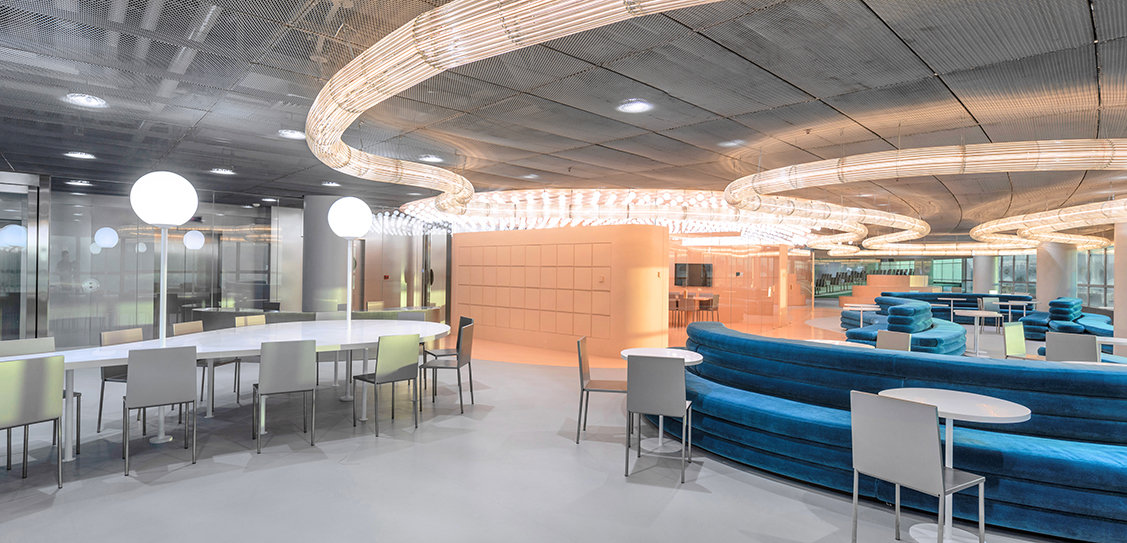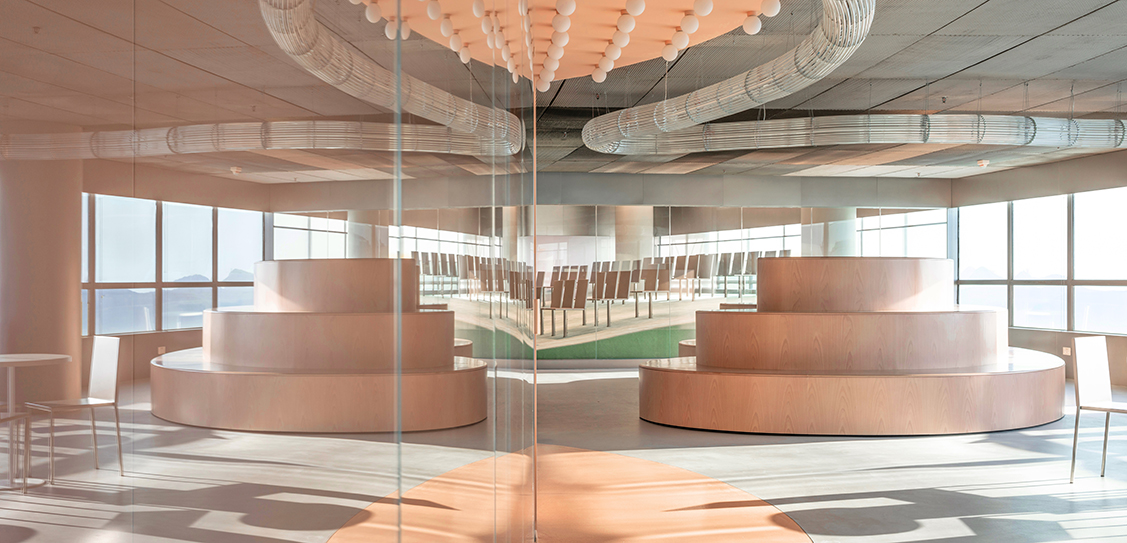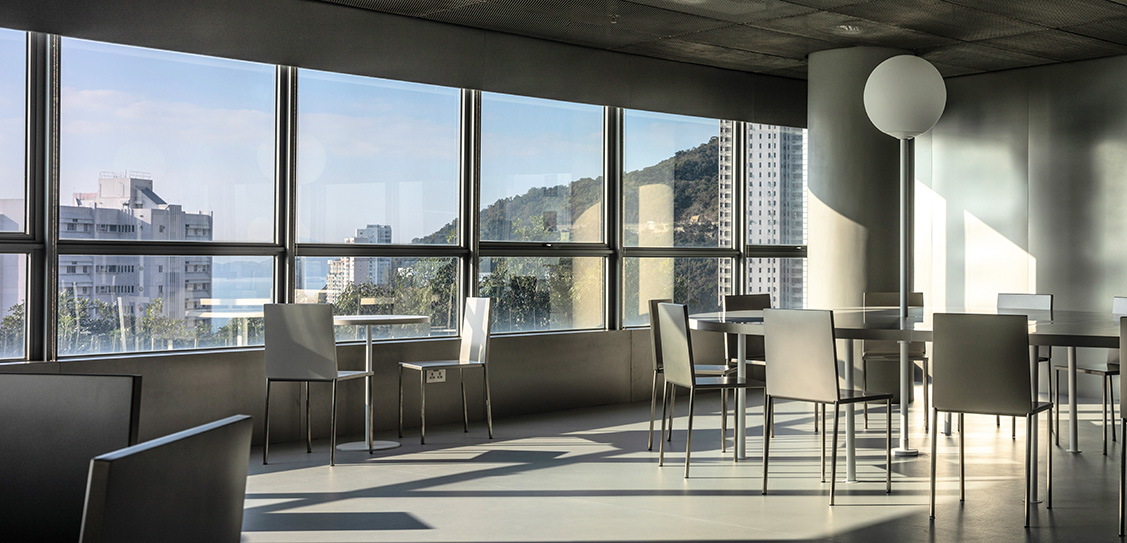The University of Hong Kong’s (HKU) medical building is located on a tree-lined hillside beyond the dense landscape of high-rises that defines much of Hong Kong, and its west-facing windows introduce abundant sunlight.
Atelier Nuno were drawn to a white finish for the interior, both for white’s association with the medical profession and as a way to foreground the natural setting. It was desired that the light would catch with a design that would fill the space and that would engage with the human scale. The walls are cladded in white-painted curved plywood, and 0.8mm thick white powder-coated perforated aluminum panels are suspended from a structural frame on the ceiling. Light permeates the panels, drawing attention to changes over the course of the day. The metal volumes appear both white and solid, and both dark and transparent, filtering light together with the neighbouring trees. The LED light tubes above the metal volumes negotiate with the natural light. As the sun sets, the lights glow increasingly warm, gradually intensifying and ultimately dominating the space.
Rather than seeking to maximise height in the lobby, large billowing forms were created that open downward. In the six metre tall foyer, the ceiling drops to a height of 2.05 m, offering a moment to engage closely with the contained light. To slow down this high-traffic space a wooden stepped platform was introduced, encouraging social interaction.
Through the changing light and the shifting qualities in the materials that the light introduces, students can experience seasonal change intimately, in a space they interact with every day.
Atelier Nuno prioritised choosing ordinary materials; in Hong Kong, luxury materials are typically celebrated, while more modest alternatives often go overlooked. White-painted finishes and perforated aluminum panels can be found in familiar spaces such as bus stops and underground rail stations; the commercial white paint used for the walls of the lobby also predominates elsewhere on campus. The prominent position of these ordinary materials in the lobby is meant to emphasise the possibilities of the everyday and, in an academic context, to suggest that all students have the means to succeed.
To design for a school is also to design for the future of education. With the recent multiplication of teaching channels, learning now goes far beyond the classroom and the library. It has become a total experience that requires flexible, welcoming spaces adapted to all forms of engagement.
This was Atelier Nuno's ambition for the 7,000 sq ft Learning Commons on the campus of HKU’s Medical School. The architects wanted to offer more possibilities outside the typical teaching setting and create space for interaction and exchange, vital components of any successful learning environment.
University campuses are changing rapidly, but spaces such as classrooms, lecture theaters, and tutorial rooms are still very much compartmentalised to serve specific functions. While preserving these essential uses, a large open space was created, free from any visual barrier, where students can study, gather, meet, and relax. Inspired by the fluidity of organic forms, a learning playground was imagined, fun and colorful, for future doctors.
Rather than prescriptive functions, a spectrum of atmospheres articulates the space, from quiet and private to collective and active. The varying curved geometry of the 40-seat table accommodates individual study, one-on-one interactions, and group work under the light of seven white globes. The curving, double-sided sofa in deep blue provides comfortable and flexible seating throughout the commons. Various openings create islands of intimate enclosures, while a continuous glass ribbon of warm light wraps around the archipelago.
Parallel to the sofa are four combinable glazed meeting rooms, a pantry, and a locker area, all blending together in a fluid peach-colored zone. More than nine hundred dimmable white globes populate the visually continuous ceiling, charting students’ interactions as lighting varies over the course of the day.
The top of a three-stepped wooden mount leads to an elevated panoramic viewpoint. Shaped like a bean, the steps provide a setting for small presentations and talks. The transparent lecture theatre seats over 70 people in organic clusters of chairs distributed across a soft green carpet that gently slopes upward, allowing students to lie down, relax, and gather informally.
Following the curvature of the building, the outer walls are cladded with stainless-steel panels which reflect the layers, colours, and lights of the learning commons, ultimately blurring the boundary of the space. Like a playground, the interstitial circulation flows unify these different spaces into a dynamic learning environment that encourages exploration, interaction, and discovery.



